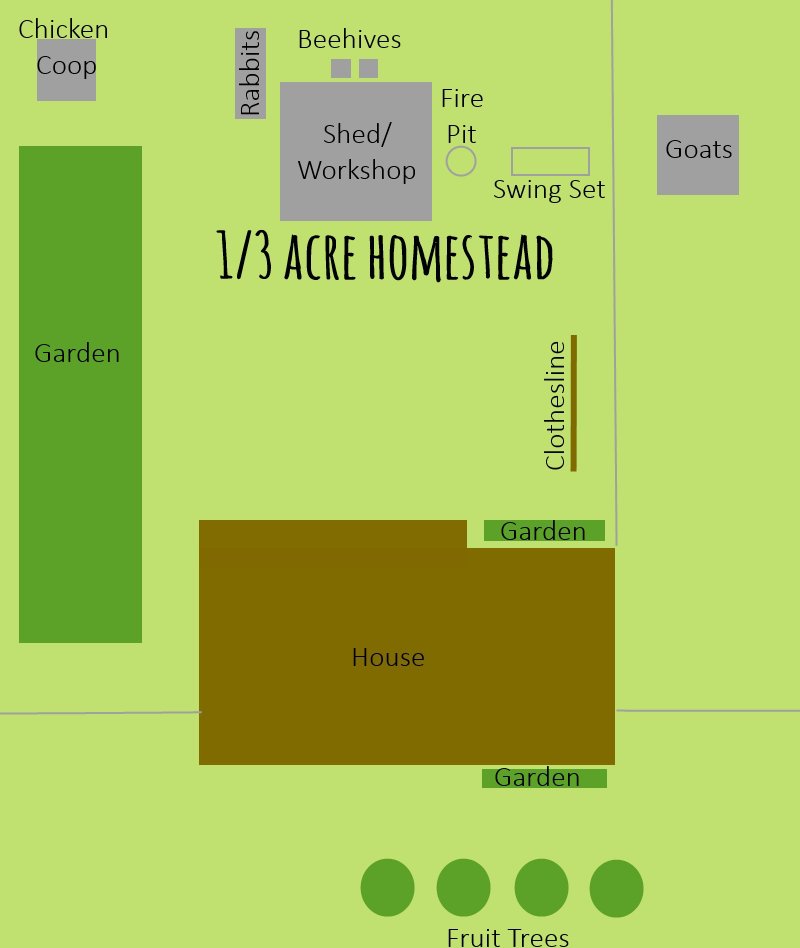These days, bartering with your neighbors is the new coupon clipping and homemade salsa using simple backyard ingredients is the new gourmet cooking. But if you're a busy person who juggles a full-time job, taking care of the kids and pets, and just about everything else around the house, the concept of homesteading can seem nearly impossible, until now. The good news is that in modern homesteading, you don't have to go it alone. Just find a few people in your neighborhood with different skill sets, and you can save time and money while becoming more self-sufficient as a neighborhood.

1.) Size It Right
If you decide to start living a more self-sufficient lifestyle, know that it's easy to fail if you try to do it all at once. Planting a small vegetable garden—no more than 4 feet by 8 feet—in a raised bed is a great way for beginners to start. Don't try to grow all your own food in the first year! Start small, add compost each season, and pay attention to the quality of your soil. As you gain experience, expand.
My first year I over did myself. I planted 6 rows of grapes each row having 4 plants. I spent over $500 in about 30 different fruit tress. Planted 15 blueberry bushes. Made made a 12'X20' garden for veggies. I planet two 30' rows one of raspberries and one of blackberries. I toped that all off with building a chicken coop and raising chickens with zero experience. Its not to say I didn't research and plan out everything I did my first year, but the time and and investment was a big one.
2.) Form Alliances
Even if you grow a considerable amount of what you need in your own vegetable garden, finding time to preserve the extras to last into the winter months can be a challenge at times. So if canning tomatoes doesn't qualify for a spot on your packed Outlook calendar, try this—find someone in your community who prepares food and offer half of your bounty in exchange for half of the prepped product. Excess fruit? Find someone in your neighborhood who makes wine or jelly, and supply her with your fruit in exchange for some of the finished product.
 Raise A Micro-
Raise A Micro-
3.) Turn waste into compost
I have a few sources of waste I use to create rich compost. The first is tree leaves. I mulch the leaves with my lawn mover, sweep them up, and dump them into a compost bin I made out of used wooden pallets.
The second source is from the wood shavings I use as a bedding for my chicken coop. I also dump the shavings into a different compost bin. The shavings are pine so I mostly use this compost for acid plants.
The third and most important of my sources is all the house hold scraps. I save most of my scraps that are not meat product or acid product and throw it into my big worm farm. If you are not familiar with worm composting here is good article. https://www.planetnatural.com/worm-composting/

4.)Flock
The perks of raising backyard chickens reach far beyond delicious, fresh eggs. Raising three to eight laying hens means you're also employing compact living machines that turn food scraps into a nitrogen-rich soil amendment for your garden. In addition to being local protein producers, they also act as biomass recyclers, compost pile turners, entertainers, fuel-free garden tillers, and pest eliminators, as well as backyard flea and tick annihilators.
If you set your coop up correctly it can very easy to raise chickens. I set an automatic water by collecting the rain off the coop roof in a rain barrel. And build a feeder that hold about 2 to three weeks worth of food. The only think I really have to do daily is collect the delicious .


